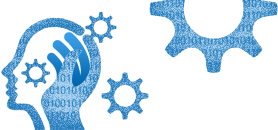6 Benefits of Headless CMS – What your Business can gain?

Technology is quickly changing the way things were done in the past pushing even the ‘advanced tech’ of a few years back slowly out of the market. These latest innovations are improved versions of their older counter parts and address the changing demands in a more comprehensive way.
Headless CMS is a fresh concept that is quickly becoming popular over the traditional or coupled CMS. The traditional content management systems are still in the market and serving, but their days might be numbered, particularly in applications that demand maximum efficiency.
Going headless is the new in-thing in the CMS arena and if your business relies on content marketing to drive revenue, you might just be in need of it. Let’s begin with a short brief on what is Headless CMS and how it differs from the traditional Content Management Systems.
What is Headless CMS?
In the language of web development, the front-end or the user interface is considered the ‘head’ of the CMS, and the backend is the ‘body’. A headless CMS will essentially come without the ‘head’, which means it will provide a perfect backend that will work as a content repository, and a CRUD interface that you can use seamlessly for Creating, Reading, Updating, and Deleting content or any part of it but no display interface.
Unlike the traditional CMS, the headless CMS does not combine a front end or a display part where the users interact with the content. Instead, the headless CMS comes with an API to the data which can be used for integrating your content repository with any or several frontends as per your needs.
In a traditional CMS, the front end and the backend are linked together. Your editors are creating and updating content on the backend of the same website that is being displayed to the users. It is a single application for both the tasks, which makes it somewhat simple. Most of these CMSs support WYSIWYG, which means ‘What You See Is What You Get’ which makes them friendly for non-techies. WordPress, Wix are some common examples of traditional CMS.
Benefits of going ‘Headless’
The traditional CMSs are simple, still, the market is quickly moving towards adopting the ‘headless’ technology. Let’s find out why?
1. More Flexibility
One of the top benefits of headless CMS is that it is API driven and not bound to the frontend. This gives maximum flexibility to the developers as they are not restricted by proprietary development protocols. Any preferred programming language can be used for the development and as the CMS dictates no specific syntax, developers can structure code to integrate with even the most complex systems without restrictions.
For example, Kentico headless cms is completely devoid of the front-end, giving the developers total control over how the content should be displayed.
2. Future-Proof
In headless CMS, the presentation or display layer is fully separate from the logic and data layer. This enables you to structure and use the content with any presentation layer. So, when you want to shift to the latest front-end technology, you will not need to go through a cumbersome technical upgrade process. Some changes in the API will ensure that your content repository and elements are perfectly distributable over all – old or new display platforms.
3. Supports Omnichannel Architecture
For digital marketers omnichannel presence is a must and creating content that works for all the channels can be a challenge. Separately managing each of the platforms is highly demanding and often not organized enough for seamless operation. A headless CMS supports easy integration with any existing business system or channels offering an effortless experience for all the customer touchpoints. It gives the scope to create a personalized experience for each of the channels from the same backend while using the same content and element repository.
4. More Scalable
Compared to the traditional CMS, the headless model is certainly more scalable in every aspect. Any new addition or up-gradation to the back end does not impact the performance of the frontend or website. With a headless CMS, you have unlimited hosting and deployment options. As the frontend and backend are severed, a back-end issue or upgrade doesn’t impact the frontend. In the same way, if there’s an upgrade for the frontend, it will not impact the backend, making the management simple and less time- consuming.
5. Better Security
Enhanced software architecture is a key point of headless CMS and this offers a bunch of benefits including better security. The access to the CMS is controlled internally, which minimizes the risks of security issues like hacking. There is a structured protocol to publish content and as per need, it can also be encrypted to ensure maximum safety.
6. Cost Effective
It is a more cost-effective solution in the long run. Any changes, like adding new functionality or a new channel, can be done easily on a headless CMS without the help of developers. It makes the process more efficient and saves on cost.
For example, Kentico headless comes with customized options to accommodate any changes you would like to implement to the backend and your marketing team can directly use these features without any assistance from the developers.
If your business has a high demand for content and depends on digital to reach more customers or to offer better service, moving to a headless CMS like the Kontent CMS is a wise option that will ready your business for the future.
About Raybiztech
As the Kentico Xperience 13 Gold Partner, Ray Business Technologies carries a competitive track record in all facets of Kentico development, upgrade, and maintenance. Our team of Xperience professionals can understand the modern requirements of creating and executing campaigns.
Raybiztech offers full-cycle projects around Xperience by Kentico with a focus on customer satisfaction and the fulfillment of precise requirements. We deliver all the essential ingredients in order to improve brand consistency and to drive business goals.

